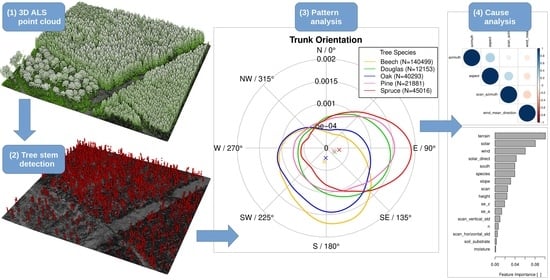ALS as Tool to Study Preferred Stem Inclination Directions
Abstract
Share and Cite
Lamprecht, S.; Stoffels, J.; Udelhoven, T. ALS as Tool to Study Preferred Stem Inclination Directions. Remote Sens. 2020, 12, 3744. https://doi.org/10.3390/rs12223744
Lamprecht S, Stoffels J, Udelhoven T. ALS as Tool to Study Preferred Stem Inclination Directions. Remote Sensing. 2020; 12(22):3744. https://doi.org/10.3390/rs12223744
Chicago/Turabian StyleLamprecht, Sebastian, Johannes Stoffels, and Thomas Udelhoven. 2020. "ALS as Tool to Study Preferred Stem Inclination Directions" Remote Sensing 12, no. 22: 3744. https://doi.org/10.3390/rs12223744
APA StyleLamprecht, S., Stoffels, J., & Udelhoven, T. (2020). ALS as Tool to Study Preferred Stem Inclination Directions. Remote Sensing, 12(22), 3744. https://doi.org/10.3390/rs12223744






